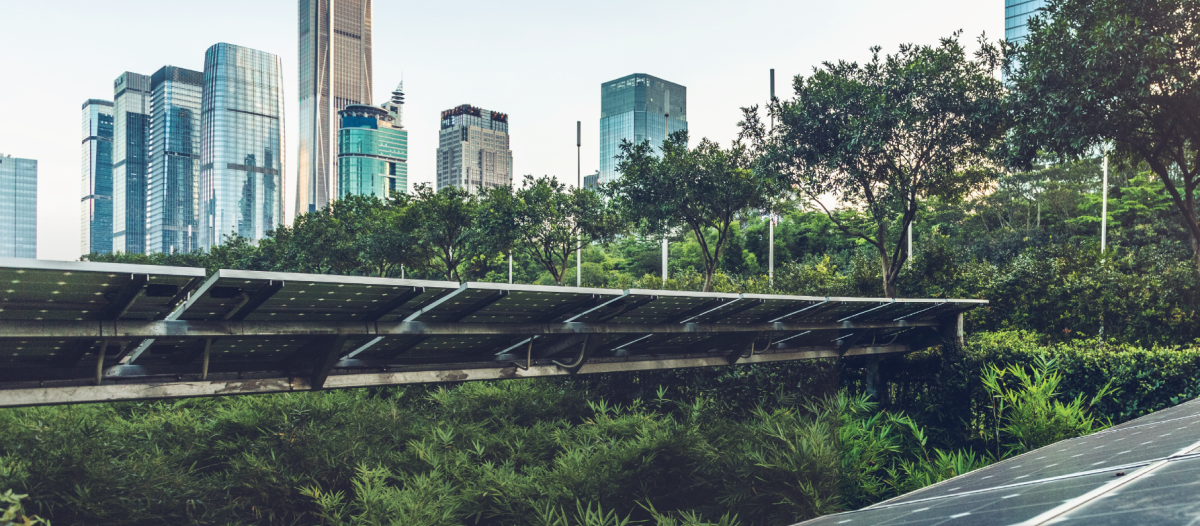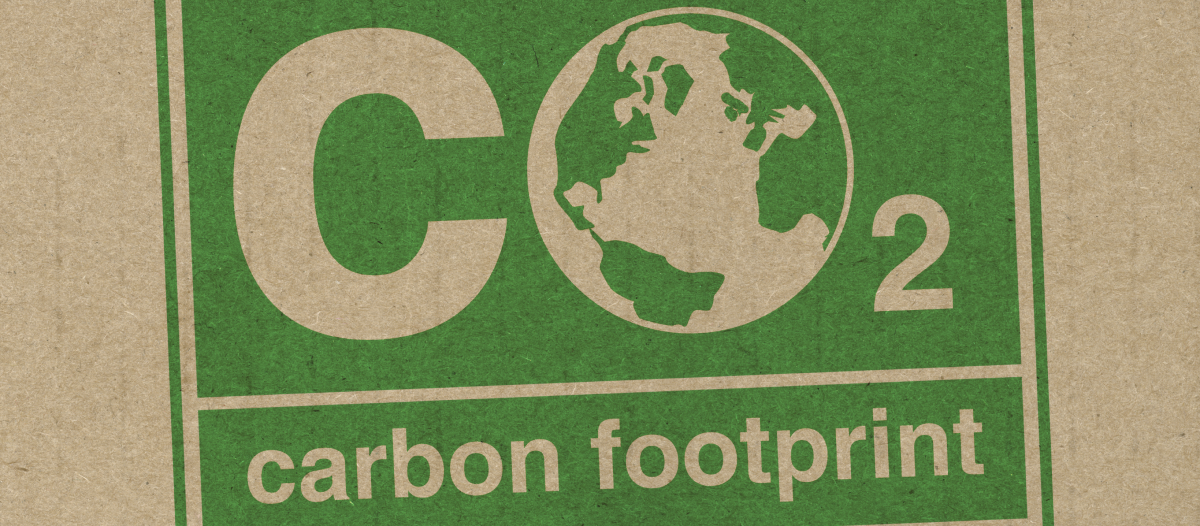Beating Record-breaking Heat
Rethinking air conditioning for a sustainable future

In the summer of 2024, relentless heatwaves swept through the United States, Europe, the Middle and Near East and Asia, with some cities and regions nearing 122 F (50 C). According to the U.S. National Aeronautics and Space Administration (NASA), the months of June, July and August combined were 0.23 C (0.4 F) warmer than any other summer on record, while data shows that the average global temperature has consistently remained 1.5 C above pre-industrial levels for 12 consecutive months ending in August 2024. As the planet warms, the escalating demand for cool air emerges as an unavoidable reality. But increasing reliance on air conditioning to combat rising heat is simultaneously worsening urban heat island effect and accelerating climate change. For facility managers, the challenge is clear: it is time to rethink air conditioning for a sustainable future.
The vicious cycle of increased cooling demand
Earth’s average global temperature has risen by at least 1.1 C (1.9 F) since 1880, with most of this warming occurring since 1975 at an accelerating rate of approximately 0.15 to 0.20 C per decade. Concurrently, energy consumption for space cooling has more than tripled since 1990. Space cooling is now the fastest-growing energy use within the building sector, which accounted for around 28 percent of total global energy-related CO2 emissions and approximately one-third of global final energy use in 2018.
Within buildings, space cooling, ventilation and heating can account for more than 40 percent of total energy consumption. In subtropical regions like Hong Kong, space cooling alone accounts for 50 percent of building energy consumption. Waste heat incurred by air-conditioning systems can lead to a temperature increase of at least 1 C in urban areas. Without intervention, space cooling energy consumption is projected to be more than double by 2050, perpetuating a vicious cycle of increased energy demand, worsening urban heat island effect and escalating climate change.
The urgency of this situation cannot be overstated. As temperatures rise, so does the demand for cooling, which, in turn, increases energy consumption and carbon emissions. This cycle not only exacerbates global warming but also places immense pressure on energy infrastructure.
Breaking the vicious cycle: Toward sustainable cooling solutions
To break this cycle, facility managers are at the forefront of rethinking and implementing sustainable practices while embracing energy-efficient solutions.
1. Behavior change
Adapting to higher indoor temperatures and reducing air-conditioning temperature settings can significantly enhance energy efficiency and balance cooling needs. Effective public policies are crucial for managing air-conditioned indoor temperature settings, thereby reducing energy consumption. Several regions and cities have implemented regulations or provided recommendations to control indoor air temperature set points in public buildings, as summarized below:
|
Region/Country |
Regulation/recommendation |
|
Spain |
Public buildings, commercial spaces and other public places must set air-conditioning temperatures no lower than 27 C (80.6 F). |
|
Italy |
The temperature must not fall below 27 C in the summer but allows a -2 C tolerance in public buildings. |
|
Beijing, China |
Air-conditioning systems in commercial and public buildings should not be set lower than 26 C (78.8 F) with relative humidity within 40 and 60 percent normally. |
|
South Korea |
Public buildings are required to maintain indoor temperatures no lower than 26 C in the summer. |
|
District of Columbia, USA |
Local government recommended setting thermostats to 78 F when the workplace is occupied. |
|
Japan |
The Cool Biz campaign encourages offices and public places to set air conditioners to 28 C (82 F) during the summer months to save energy. |
Light clothing also helps maintain comfort at higher indoor temperatures, reducing the need for excessive cooling and saving energy. When outdoor temperatures rise, slightly higher indoor temperature settings would still provide reasonably comfortable indoor environments (due to the comparatively small thermal contrast), reducing energy use while ensuring thermal relief.
2. Deploy resilient cooling strategies for buildings
Facing rising outdoor temperatures and intensifying heat waves, the design of resilient cooling systems is increasingly vital for buildings. Beyond merely robust solutions capable of handling short and extensive heat waves, resilient cooling encompasses energy-efficient, low-emission and cost-effective strategies. The objective is to enhance a building's resilience to help mitigate the thermal and other impacts of climate change, particularly during prolonged and intense heat waves. Resilient cooling design can essentially be achieved through two main strategies: mitigation (reducing heat gains) and removal (efficiently expelling heat).
Mitigation - Reducing heat gains
Greenery naturally mitigates rising outdoor temperatures that impact buildings. Green roofs, in particular, can lower roof surface temperatures, thereby reducing building heat gains. Research also shows that green roofs can lower outdoor temperatures by 1.5 C, potentially cutting energy for cooling incoming air. Strategic landscaping around buildings absorbs radiant heat, enhances pedestrian comfort, and reduces the urban heat island effect through shading and transpiration cooling. However, high construction and maintenance costs, along with the risk of roof leakage, may hinder green roof adoption. Maintenance-free radiative cooling paint presents a viable alternative. This type of cooling paint can be applied to roofs and to equipment and installations, such as water tanks for cooling towers and the cooling towers themselves. It helps reduce heat gain from sun exposure, facilitates heat removal from within and maintains a lower temperature, thereby enhancing operating efficiency. Shading the condensers without obstruction of airflow may have a theoretical increase in coefficient of performance (COP) up to 2.5 percent. Additionally, the use of internal blinds can significantly reduce heat gains through windows. The strategic installation of air curtains, particularly at main entrances, often prevents the entry of hot air into indoor spaces.
Removal – Efficiently expelling heat
A comprehensive set of energy-efficient strategies for space cooling not only adapt heat stress but also reduce operational costs and contribute to environmental sustainability.
|
Cooling system upgrade |
Transitioning from air-cooled to water-cooled systems: Water-cooled systems can achieve a COP of up to 6, compared to around 3 for air-cooled chillers. Operating multiple cooling towers at part load is often more effective than running a single tower at full load. To optimize performance, check spray system distribution, correct clogged or broken nozzles, monitor cycles of concentration, ensure sufficient makeup water supply, adjust biocide dosing for increased demand and increase inventory of treatment chemicals as needed. Note that HFO refrigerants, while environmentally friendly, may have lower efficiency and cooling capacity than HFCs. Refrigerants such as R-1234ze, R-1233zd, R-514A and R-1336mzz are considered new-generation options with low global warming potential (GWP) and high efficiency. Manufacturer consultation is essential for proper HFO adaptation.
Energy reuse: Energy recovery ventilation (ERV) captures waste energy from exhaust air and uses it to pre-condition incoming fresh air. This process reduces the overall cooling load on the HVAC system, thereby enhancing energy efficiency.
Demand-controlled ventilation (DCV): Utilize DCV systems with CO2 sensors to optimize ventilation rates based on real-time occupancy and air quality, preventing over-exhaustion of conditioned air and ensuring energy-efficient operation while maintaining optimal indoor air quality. |
|
Cooling strategies |
Control algorithm for chiller operation: Optimize chiller’s plant performance by matching chiller capacities to cooling demands. Operating multiple variable-speed driven (VSD) chillers at low part-load ratios can often be more energy-efficient than relying on one or two chillers. Additionally, constant-speed driven (CSD) chillers can often perform well when operating at a fixed load-ratio of 70-80 percent of peak load.
Night ventilation with diurnal temperature range: Night ventilation leverages the diurnal temperature range (DTR) to cool buildings. During heatwave days, the DTR is notably large (3.7 C to 5.7 C), especially in high-latitude cities, which allows for effectively utilizing cool night air for ventilation. An enthalpy sensor at the fresh air intake may enhance automatic control of this process.
Pre-cooling during off-peak hours: Leveraging lower energy costs during off-peak hours by pre-cooling the building can flatten peak daytime cooling demand, improves the overall system COP and mitigates the inefficiencies of chiller operation at peak loads.
Secondary cooling systems: Employ localized cooling units to target areas with higher cooling loads, reducing demand on the primary system and enhancing energy efficiency. Critical zones, such as main lobbies with high foot traffic and large glass façades, benefit significantly from this approach. |
|
Maintenance |
Thermal insulation inspection on cooling system: Chilled water pipes, refrigerant lines and ductwork typically require thermal insulation. However, during installation or over time, cracks can develop, allowing water vapor to ingress into the insulation. Research shows that thermal conductivity can increase by 1.6 to 3 times when moisture content reaches 5 percent and 12 percent, respectively. Even a slight deviation from the chilled water setpoint can lead to significant energy losses. This issue is exacerbated in high-rise buildings and facilities with complex chilled water systems, such as shopping centers. Utilizing thermal imaging cameras can facilitate rapid detection of insulation conditions, particularly for hidden cracks or moisture issues.
Care on condensing side in cooling systems: Effective heat rejection is critical during hot seasons. For air-cooled chillers, it is essential to ensure proper fan operation and to remove dust and dirt from the tubes and fins. For water-cooled chillers, minimizing fouling on the condenser is crucial. Implementing a proper cleaning system or protocol can reduce fouling resistance by 74.5 percent, with reported COP improvements ranging from 1.6 percent to 10.2 percent.
Care on air delivery system: In HVAC systems, it is not uncommon to find filters accounting for half or more of the fan's maximum static pressure output. As heat gains and cooling demands rise, energy consumption increases, particularly with dirty filters, which can lead to an average annual power consumption increase of 14.3 percent, escalating to 28.4 percent for heavily soiled filters due to higher pressure drops and reduced fan efficiency. Additionally, dirty coils hinder heat transfer, diminishing cooling capacity and increasing energy use. Regular filter replacements and coil cleaning are essential for efficient operation. For variable air volume (VAV) systems, accurate airflow and pressure sensor readings, along with proper damper operation, are crucial.
Ductwork inspection: Even a modest 5 percent rate of duct leakage can cause conditioned air to escape, increasing fan energy use and cooling demand. By inspecting and sealing leaks and ensuring proper insulation, energy use can be significantly reduced.
Others: Lubricating HVAC components such as fan motors, bearings and belts minimize friction and wear, ensuring smooth operation and reducing mechanical failure risks during high-demand periods. Pre-summer calibration of thermostats, checking the operation schedule and verifying the functionality of cooling coil valves can ensure accurate temperature readings, prevent system overwork and save energy. Low delta-T syndrome is a common issue that results in excessive energy consumption by pumps and chillers. Consulting with HVAC experts is essential for effective resolution. |
When it comes to decentralized cooling systems for buildings, prioritizing energy-efficient and reliable air conditioners is crucial. To ensure reliable cooling, it is essential to avoid triggering high-temperature protection during operation. This can be achieved by incorporating robust air or refrigeration cooling for IGBT power modules, while being mindful of condensation risks. High energy efficiency air conditioners commonly feature large-diameter fans in both outdoor and indoor units, along with thinner coppers pipes. They also incorporate electronic expansion valves for precise refrigerant flow control and offer abundant speed settings to accommodate various part-load scenarios. It is worth noting that the use of R32 provides approximately 10 percent higher COP than R410A, thanks to its higher latent heat, superior liquid thermal conductivity, lower viscosity and lower suction vapor density. However, due to its relatively high global warming potential (GWP) and the forthcoming ban under the Kigali Agreement, R-454B may be a suitable alternative. The cooling seasonal performance factor (CSPF) serves as an indicator for evaluating the energy performance of room air conditioners over an entire cooling season. A higher CSPF rating signifies greater energy efficiency, leading to significant long-term savings. It is important to consider that a device's CSPF rating may vary across regions with different temperature distributions.
Leading the charge for sustainable cooling
Facility managers stand at the forefront of the battle against climate change. The record-breaking heatwaves and rising global temperatures underscore the urgency of rethinking the approach to the design, operation and management of air-conditioning systems. These solutions — from behavior changes to advanced cooling practices — are not just theoretical concepts but practical steps people can take today.


References
earthobservatory.nasa.gov/images/151831/summer-2023-was-the-hottest-on-record
climate.copernicus.eu/surface-air-temperature-august-2024
earthobservatory.nasa.gov/world-of-change/global-temperatures
Bezerra, P. et al. (2021) Impacts of a warmer world on space cooling demand in Brazilian households. Energy and Buildings, 234, 110696-. doi.org/10.1016/j.enbuild.2020.110696
gsa.gov/climate-action-and-sustainability/center-for-emerging-building-technologies/completed-assessments/hvac
[1] Salamanca, F. et al. (2014) Anthropogenic heating of the urban environment due to air conditioning. Journal of Geophysical Research. Atmospheres, 119(10), 5949–5965. doi.org/10.1002/2013JD021225
nytimes.com/2022/08/05/world/europe/spain-air-conditioning-limits.html
beijing.gov.cn/gzdt/tztg//202212/P020221216679456835919.pdf
english.seoul.go.kr/seoul-the-nation%E2%80%99s-first-standardized-indoor-temperature-for-buildings-is-made-compulsory/
doee.dc.gov/service/energy-tips-commercial-buildings
japantoday.com/category/national/cool-biz-campaign-begins-across-japan-2
[1] International Energy Agency (2024) Resilient Cooling of Buildings Project Summary Report (Annex 80)
[1] Ciacci, C. et al. (2023) Green strategies for improving urban microclimate and air quality: A case study of an Italian industrial district and facility. Building and Environment, 244, 110762-. doi.org/10.1016/j.buildenv.2023.110762
ssc.hkust.edu.hk/projects/protecting-our-scarce-resources/passive-radiative-cooling-for-solar-pv-frames-cooling
[1] ElSherbini, A. I., & Maheshwari, G. P. (2010). Impact of shading air-cooled condensers on the efficiency of air-conditioning systems. Energy and Buildings, 42(10), 1948–1951. doi.org/10.1016/j.enbuild.2010.05.031
[1] Kueh, M.-T. et al. (2017). Climate variability of heat waves and their associated diurnal temperature range variations in Taiwan. Environmental Research Letters, 12(7), 74017-. doi.org/10.1088/1748-9326/aa70d9
[1] Cai, S.S. et al. (2012) Moisture Accumulation and Its Impact on the Thermal Performance of Pipe Insulation for Chilled Water Pipes in High Performance Buildings" (2012). International High Performance Buildings Conference. Paper 59. docs.lib.purdue.edu/ihpbc/59
[1] Margana A.S. et al. (2024) Evaluation of heat loss in distribution pipeline cold water in chiller fan coil unit. AIP Conf. Proc. 12 July 2024; 3077 (1): 050015.
[1] Ma, H. et al. (2018) Influence of rubber ball on-line cleaning device on chiller performance. Applied Thermal Engineering, 128, 1488–1493. doi.org/10.1016/j.applthermaleng.2017.09.113
[1] Nassif, N. (2012). Impacts of air filters on energy consumption in typical HVAC systems. ASHRAE TRANSACTIONS 2012, VOL 118, PT 2, 118(2), 74–81.
mn.gov/commerce-stat/pdfs/Reducing%20duct%20leakage.pdf
[1] Krishnamoorthy, S., & Modera, M. (2016). Impacts of duct leakage on central outdoor-air conditioning for commercial-building VAV systems. Energy and Buildings, 119, 340–351. doi.org/10.1016/j.enbuild.2016.03.057
[1] Xu, X. et al. (2013) Performance comparison of R410A and R32 in vapor injection cycles. International Journal of Refrigeration, 36(3), 892–903. doi.org/10.1016/j.ijrefrig.2012.12.010
Read more on Sustainability , Occupancy & Human Factors and Operations & Maintenance
Explore All FMJ Topics









